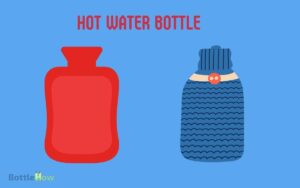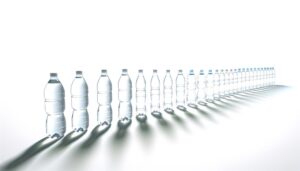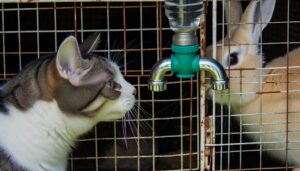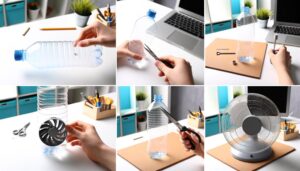Do You Have to Wash a New Water Bottle? Yes!
Yes, you should wash a new water bottle before using it. New bottles often have manufacturing residues, dust, and contaminants that can pose health risks.
Washing thoroughly with warm, soapy water removes plasticizers, heavy metals, and microbial contaminants that aren’t visible.
Rinsing well guarantees no soap residue remains. Different materials like plastic, stainless steel, or glass may require specific cleaning methods, so check the care instructions.
Proper initial cleaning guarantees a safer drinking experience and better bottle hygiene. There’s more to know about materials and cleaning products that could make it easier.
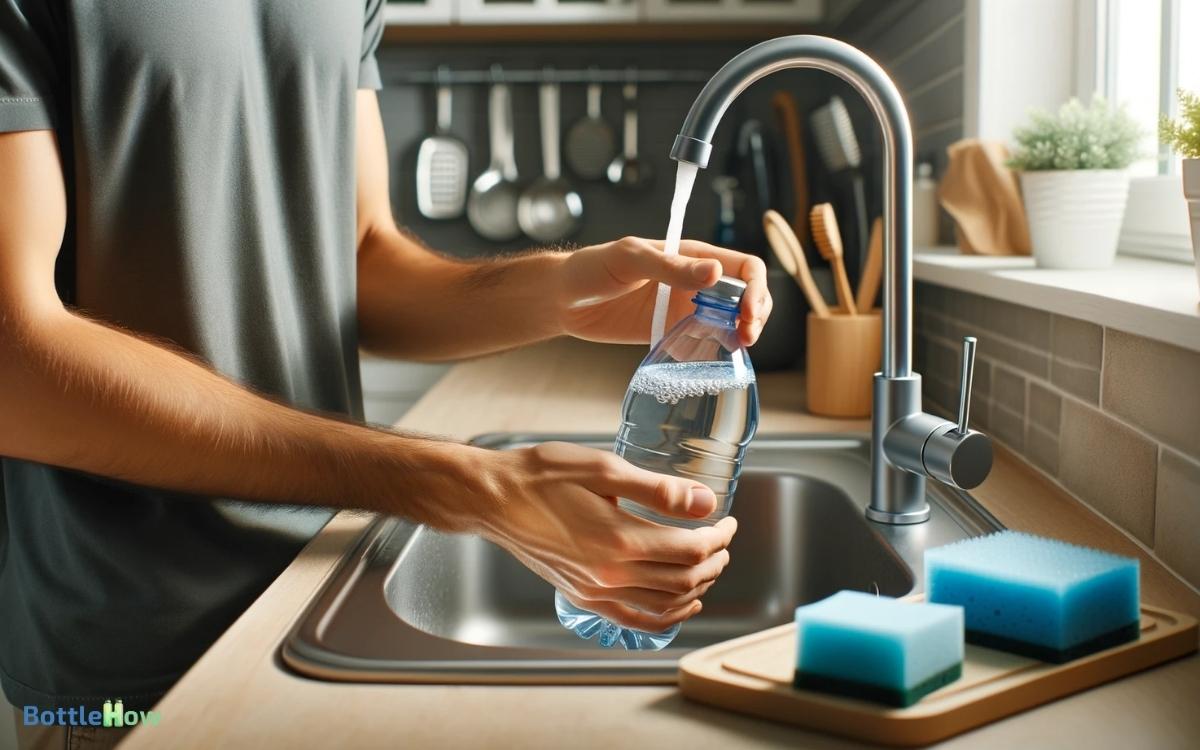
Key Takeaways
Importance of Washing New Bottles
When you buy a new water bottle, it’s important to wash it thoroughly to remove any manufacturing residues, dust, or contaminants that may be present.
Studies have shown that new bottles can carry residues from production processes, including adhesives, lubricants, and microscopic debris. These substances mightn’t be visible, but they can be harmful if ingested.
By washing the bottle with warm, soapy water, you guarantee that any lingering chemicals or particles are eliminated. Rinse it thoroughly to remove all soap, as residual soap can also be harmful.
Even if your bottle looks clean, this initial cleaning step is essential for your health, providing a safer drinking experience from the start. Don’t skip this essential process.
Potential Contaminants
New water bottles can harbor a variety of potential contaminants, including chemical residues from manufacturing processes and microscopic particles that pose health risks. It’s essential to understand what might be lurking in that seemingly clean bottle.
Here are four common contaminants you should be aware of:
- Plasticizers: Chemicals used to make plastics flexible. These can leach into your water.
- Dust and Debris: Tiny particles that can accumulate during storage and transport.
- Microbial Contaminants: Bacteria or mold spores that can grow in damp environments.
- Heavy Metals: Trace amounts from manufacturing equipment that can end up in your bottle.
Manufacturing Residues
When you first get a new water bottle, it’s important to take into account the manufacturing residues that might be present.
Studies have shown that chemical contaminants, such as plasticizers or metal particles, can remain from the production process.
Additionally, dust and debris can accumulate during packaging and shipping, making it essential to wash the bottle thoroughly before use.
Chemical Contaminants
Despite rigorous quality control, modern manufacturing processes can still leave behind chemical residues on new water bottles. These residues may include lubricants, solvents, and other chemicals used in production.
It’s important to wash your new bottle to avoid ingesting these potentially harmful substances. Consider the following:
- Lubricants: Used in molding machines, these can remain on the bottle surface.
- Solvents: Employed to clean parts, they might leave traces.
- Plasticizers: Added to make plastics flexible, they can leach out.
- Chemical stabilizers: Used to enhance material durability, they might be present.
Washing your new water bottle ensures you’re starting with a clean slate, free from these contaminants. It’s a simple step for peace of mind and better health.
Dust and Debris
In addition to chemical contaminants, dust and debris from the manufacturing process can also settle on your new water bottle, making it necessary to wash it before use.
Manufacturing environments, even those that are highly controlled, can’t eliminate all particles. Tiny fragments of plastic, metal, or other materials might linger inside or on the surface.
These residues could introduce unwanted substances into your water, potentially affecting its taste or safety.
Packaging and Handling
Before you start washing your new water bottle, carefully examine the packaging for any specific care instructions provided by the manufacturer. This step is important because different materials, such as stainless steel or plastic, may require specific cleaning methods to maintain their quality and durability. If you’re unsure about how to wash Swell bottle properly, refer to the brand’s official website or care guide for the best cleaning practices. Using the wrong cleaning technique or harsh detergents could damage the bottle’s interior coating or insulation.
This step is important as it guarantees you don’t inadvertently damage the bottle. Manufacturers often include important guidelines to maintain the bottle’s integrity and safety.
Pay attention to the following:
- Washing Instructions: Check if the bottle is dishwasher-safe or requires hand washing.
- Temperature Limits: Note any temperature restrictions to avoid warping or melting.
- Cleaning Agents: Identify recommended or prohibited cleaning agents, such as bleach or abrasives.
- Special Features: Look for instructions on handling any unique features like built-in filters or straws.
Following these guidelines helps maintain the bottle’s longevity and hygiene.
Types of Materials
When washing your new water bottle, it’s crucial to take into account the material, as each type requires a different approach.
For instance, plastic bottles might retain odors more than stainless steel, and glass bottles can be more prone to breakage than silicone.
Make sure to follow specific cleaning guidelines for each material to maintain hygiene and longevity.
Plastic Vs. Stainless Steel
Choosing between plastic and stainless steel for your new water bottle involves weighing the benefits and drawbacks of each material to guarantee you make an informed decision.
Plastic bottles are lightweight and often less expensive, but they can harbor bacteria and may contain harmful chemicals like BPA.
Stainless steel bottles, on the other hand, are durable and resistant to bacteria, though they tend to be heavier and more costly.
Consider the following factors:
- Health Risks: Plastic may contain chemicals; stainless steel is generally safer.
- Durability: Stainless steel is more durable but heavier.
- Cost: Plastic is cheaper; stainless steel costs more initially.
- Cleaning: Stainless steel is easier to clean thoroughly, reducing bacterial growth.
Evaluate these aspects to choose what’s best for you.
Glass Vs. Silicone
You should consider the unique benefits and drawbacks of glass and silicone when selecting a material for your new water bottle.
Glass bottles are non-toxic, don’t retain flavors, and are easy to clean, making them a healthy choice. However, they’re fragile and can break easily.
Silicone bottles, on the other hand, are flexible, lightweight, and durable, making them ideal for active lifestyles. Yet, they may retain odors over time and can be challenging to clean thoroughly.
When deciding, think about your daily activities and preferences. If you prioritize safety and purity, glass might be best. If you need something more resilient and portable, silicone could be the way to go.
Always wash either type before first use to guarantee cleanliness.
Health Risks
Neglecting to wash a new water bottle before use can expose you to harmful bacteria and chemical residues.
When manufacturers produce and package these bottles, they might use various chemicals that can linger on the surface. Additionally, bacteria can accumulate during shipping and handling.
To safeguard your health isn’t compromised, consider the following risks:
- Chemical residues: Leftover manufacturing chemicals can leach into your water, potentially causing health issues.
- Bacterial contamination: Unwashed bottles can harbor bacteria from various sources, leading to infections.
- Dust and debris: Packaging and shipping processes can introduce dust and small particles into the bottle.
- Plasticizers and BPA: New plastic bottles might release harmful plasticizers or BPA if not properly cleaned.
Cleaning Methods
To guarantee your new water bottle is cleaned properly, you can either hand-wash it or use a dishwasher if it’s safe to do so.
Hand-washing allows you to reach every nook and cranny, using warm soapy water and a bottle brush for thorough cleaning.
Alternatively, many water bottles are labeled dishwasher safe, making it a convenient option, but it’s important to check the manufacturer’s guidelines to avoid potential damage.
Hand-Washing Best Practices
Thoroughly hand-washing your new water bottle with warm soapy water is essential to eliminate any manufacturing residues and guarantee it’s safe for use.
Follow these best practices to make sure thorough cleaning:
- Use Warm, Soapy Water: Fill the bottle with warm water and add a few drops of dish soap. This helps in breaking down any oils and residues.
- Scrub All Surfaces: Use a bottle brush to scrub the inside, including hard-to-reach areas. This ensures no spots are missed.
- Rinse Thoroughly: Rinse the bottle with warm water multiple times to make sure all soap is removed.
- Air Dry Completely: Place the bottle upside down on a clean, dry rack to air dry, preventing bacterial growth.
Dishwasher Safe Options
After ensuring your new water bottle is clean through hand-washing, you might wonder if using the dishwasher is a viable option for regular maintenance.
- First, check the manufacturer’s label or website for dishwasher-safe confirmation.
- Not all water bottles are designed to withstand the heat and detergents used in dishwashers, which could cause warping or degradation.
- If the bottle is dishwasher safe, place it on the top rack to minimize exposure to intense heat.
- Components like lids and seals should also be checked for dishwasher compatibility.
Dishwashers can efficiently clean and sanitize, but always follow specific care instructions to extend the life of your water bottle and maintain its performance.
Recommended Cleaning Products
When selecting cleaning products for your new water bottle, it’s essential to choose ones that are gentle yet effective to avoid damaging the material.
Here are four recommended options:
- Mild Dish Soap: Opt for a fragrance-free, biodegradable soap to clean without leaving residue or harming the environment.
- White Vinegar: A natural disinfectant, white vinegar can help break down any build-up and kill bacteria.
- Baking Soda: This gentle abrasive works well for removing stubborn stains and neutralizing odors.
- Bottle Brush: A soft-bristle brush reaches into crevices without scratching the surface.
Using these products ensures your water bottle remains clean and safe for use. Always rinse thoroughly to remove any cleaning agents before your next use.
Frequency of Cleaning
How often should you clean your water bottle to make sure it’s free from harmful bacteria and mold? Experts recommend washing it daily.
Bacteria can quickly multiply in moist environments, potentially causing health issues. Use hot, soapy water for a thorough cleanse.
If your bottle has a narrow mouth or complex parts, consider using a bottle brush to reach all areas.
For deeper cleaning, especially if you’ve noticed any odor or mold, once a week use a mixture of water and white vinegar or baking soda.
This helps eliminate stubborn bacteria and residue. Be cautious: always rinse thoroughly to remove any cleaning agents.
Consistent cleaning ensures your bottle remains safe and hygienic for everyday use.
Storing Your Bottle
Proper storage of your water bottle is equally important to maintaining its cleanliness and longevity. Storing it correctly helps prevent bacteria buildup and extends its lifespan.
Here are key steps to follow:
- Dry Completely: Guarantee your bottle is thoroughly dry before storing. Moisture can foster bacterial growth.
- Keep the Lid Off: Store the bottle with the lid off to allow air circulation, which helps keep it dry and odor-free.
- Avoid Direct Sunlight: Exposure to direct sunlight can degrade the material and affect taste. Store in a cool, dark place.
- Clean Storage Area: Maintain the storage area clean and free from dust and contaminants to prevent outside bacteria from settling on your bottle.
Conclusion
Imagine taking a revitalizing sip from your new water bottle, only to realize it’s not as clean as you thought.
Manufacturing residues and potential contaminants might still linger. Be cautious—clean it thoroughly before use.
Use recommended cleaning products to make sure your bottle is free from harmful residues. Don’t skip this vital step. The seemingly pristine surface may harbor unseen hazards.
Keep your hydration safe by always washing your new bottle first. Your health depends on it.


